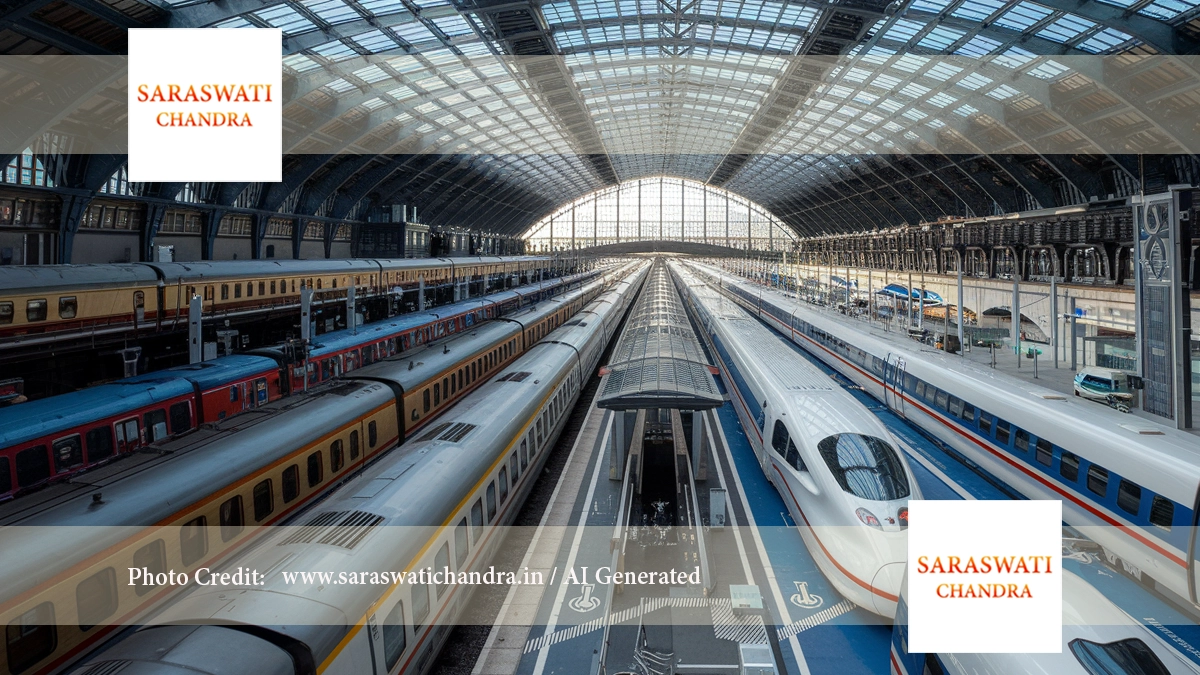Why India’s Railway Infrastructure Lags Behind: An In-Depth Analysis
India, with one of the largest railway networks in the world, has made remarkable strides in transportation. However, its railway infrastructure continues to lag behind many developed nations. In this analysis, we’ll explore the challenges India faces in improving its railway infrastructure and compare it with the advancements in global railway systems. We will also look into why these issues persist and how India can overcome them.
India’s Railway Network: A Snapshot
India’s railway system, established in the 19th century, is one of the oldest in the world. It covers an extensive 67,000 kilometers, serving over 1.3 billion people annually. Despite this immense network, the infrastructure is often criticized for inefficiencies, overcrowding, and slow modernization. The Indian Railways is a lifeline for millions, but it struggles with outdated systems, frequent delays, and safety concerns.
Comparison with Global Railway Infrastructure
When compared to the railway systems of countries like Japan, Germany, and France, India’s infrastructure is far from competitive. Let’s examine these countries’ railway achievements and how India measures up.
1. Japan: Shinkansen – A Model of Speed and Safety
Japan’s Shinkansen, or bullet trains, is a symbol of high-speed railway innovation. Operating at speeds of up to 320 km/h, the Shinkansen system is known for its punctuality, safety, and reliability. The network is extensively developed, with continuous track expansion and state-of-the-art signaling systems.
In comparison, India’s rail network primarily operates at much lower speeds. The fastest trains in India, such as the Vande Bharat Express, operate at around 160 km/h, far below Japan’s benchmark. Additionally, India’s railways still rely heavily on traditional systems, making upgrades and expansions a challenge.
2. Germany: Precision and Efficiency in Rail Operations
Germany boasts one of the most efficient and punctual railway systems in the world. The Deutsche Bahn (DB) operates an integrated system, ensuring smooth transitions between regional, national, and international networks. The use of modern technologies, including advanced signaling and electrification systems, ensures that trains are punctual and the infrastructure is maintained efficiently.
India, on the other hand, faces a major challenge in terms of signaling and train operations. The absence of advanced signaling systems in many parts of the country results in delays and safety issues. While efforts are underway to modernize the system, the pace of change remains slow.
3. France: High-Speed Rail and Sustainability
France is known for its TGV (Train à Grande Vitesse) network, which operates at speeds of up to 320 km/h, connecting major cities with minimal environmental impact. The TGV system integrates seamlessly with the European railway network, offering a sustainable, high-speed mode of transportation.
In contrast, India is still in the early stages of implementing high-speed rail projects. The Mumbai-Ahmedabad bullet train, a part of India’s high-speed rail vision, is expected to become operational by 2028. While this is a step in the right direction, it highlights the slow pace of India’s railway modernization when compared to the rapid progress seen in Europe.
Why India is Lagging Behind in Railway Infrastructure
Several factors contribute to India’s railway lag:
1. Budget Constraints and Overcrowding
The Indian government has historically allocated insufficient funds to modernize the railway infrastructure. The Indian Railways, despite its vast network, has struggled to attract investment in upgrading stations, tracks, and rolling stock. With growing population and rising demand for transportation, overcrowding has become a major issue. This not only affects comfort but also poses serious safety risks.
2. Outdated Technology
Many parts of the Indian rail system still operate using outdated technology. While countries like Japan and Germany have embraced automation and smart systems, India’s railway infrastructure remains largely manual. The reliance on antiquated systems for track switching, signaling, and train management leads to inefficiencies.
3. Safety Concerns
Safety remains a critical issue for Indian Railways. While the government has made strides in improving safety features, accidents due to outdated infrastructure, poor track maintenance, and lack of modern signaling systems are still common. Compared to developed nations, India has a higher rate of railway accidents.
4. Delays in Modernization Projects
India has ambitious plans for railway modernization, including the introduction of high-speed trains and electrification of all tracks. However, these projects face delays due to bureaucratic red tape, financial constraints, and land acquisition issues.
What Needs to Change?
To catch up with global standards, India must focus on the following areas:
1. Increased Investment
The Indian government needs to invest significantly in modernizing the railway infrastructure. This includes upgrading stations, installing modern signaling systems, and increasing the speed of trains. Public-private partnerships (PPP) can play a key role in attracting investment for these projects.
2. Adoption of Modern Technology
India must adopt cutting-edge technologies like automatic train control systems, real-time tracking, and smart ticketing. Incorporating these systems will increase the efficiency, safety, and speed of train operations.
3. Safety First
Investing in safety features, including better track maintenance, advanced signaling systems, and surveillance, is critical. Indian Railways should also focus on upgrading older rolling stock to ensure the safety of passengers.
4. Expediting High-Speed Rail Projects
High-speed rail can revolutionize transportation in India. The government should expedite the development of bullet train corridors and ensure that infrastructure projects are completed on time.
Conclusion
India’s railway infrastructure has come a long way, but it is clear that there is still much work to be done to bring it on par with the world’s best systems. By investing in modernization, adopting new technologies, and addressing safety concerns, India can transform its railway network into one of the most efficient and advanced systems in the world. The journey towards modernization may be slow, but with the right strategies in place, India can overcome these challenges and create a railway system that meets global standards.
